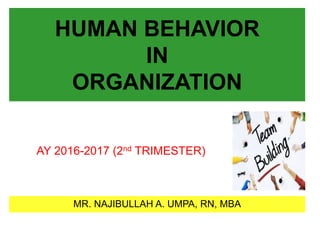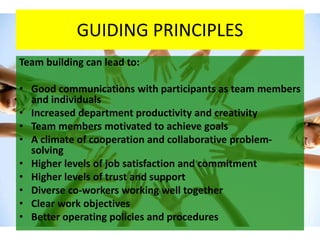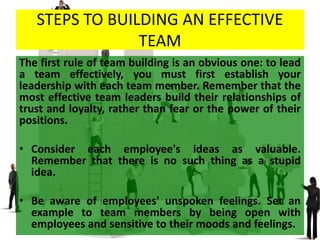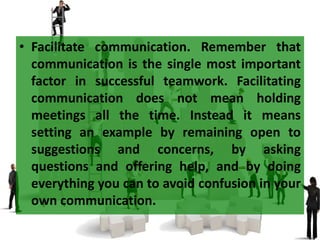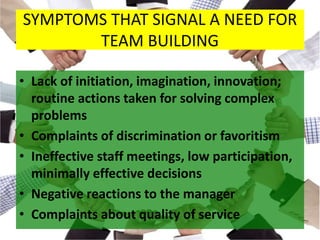This document discusses team building in organizations. It defines team building as an ongoing process that helps a work group evolve into a cohesive unit where members share expectations, trust and support each other, and respect individual differences. The document outlines guiding principles of team building such as good communication, increased productivity, motivation to achieve goals, and higher levels of trust and job satisfaction. It then describes steps to build an effective team, which include establishing leadership, considering employees' ideas, acting as a harmonizing influence, encouraging trust and cooperation, and facilitating communication. Symptoms that signal a need for team building are also listed, such as decreased productivity and conflicts among staff members.
